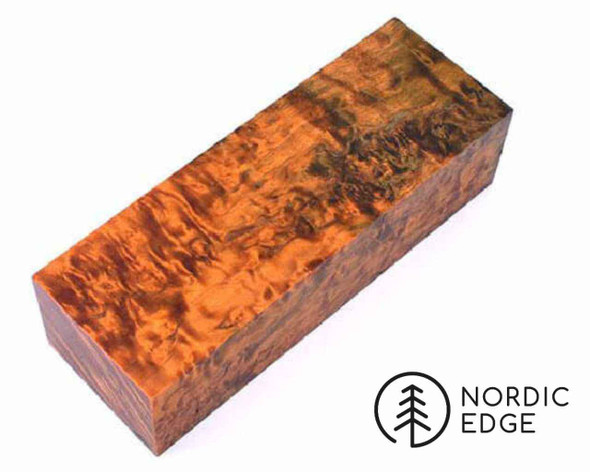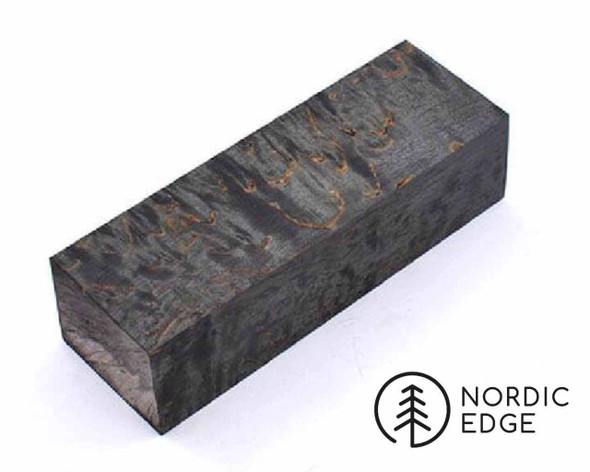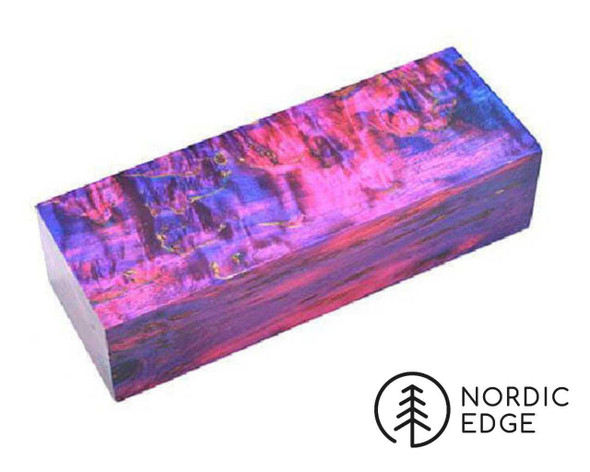RESINEX
Resinex Wood Stabilising Resin, 3KG
- Gift wrapping:
- Options available
Bulk discount rates
Below are the available bulk discount rates for each individual item when you purchase a certain amount
| Buy 4 or above | and get $99.20 off |
Description
RESINEX, Wood Stabilising Resin 3KG pack w/activator
**Australia Only, not for International orders. And only by Standard freight - not Express.( We are unable to ship this outside of Australia as it is a liquid.) **
- Achieve Professional Results at home
- Easy to use with vacuum chambers
- Deep penetration and solid curing in wood and antler
- Can be dyed with solvent-based dyes
- Non-flammable with low odor
RESINEX is a wood stabilising resin used to stabilise wood, antler and other materials used in knife making for handles.
The 3 kg kit consists of a 3 kg bottle of Resinex and a small bottle of activator crystals, to be added to the large bottle.
The wood needs to be very dry to not lock the moisture in, best practice is to dry the wood at low heat for 24 hours and let cool in a ziplock bag to not take up moisture from the air while cooling.
Process:
- Prepare the wood (drying to remove all moisture)
- Activate the resin by adding the small bottle to the large and mix well
- Add resin to weighted-down wood in vacuum chamber
- Apply vacuum until no more bubbles
- Allow to soak for at least twice as long as vacuum time*
- Wrap in foil, place in oven at 110 C
- Leave for 2-4 hours until cured
- Remove one block and unwrap the foil. If still wet, place back in stove and cure for another hour, test again.
*Note: Australian hardwoods might take months to stabilise due to much higher density and a more closed cell structure than what most online instructions are based on. Woods like maple burl will be a much easier wood to start out with for new wood stabilisers. Always start without dyes and experiment when comfortable with your setup and the results you achieve using a particular wood and soak time.
More detailed description of each step:
Prepare the wood:
- The wood needs to be very dry, preferably 2% moisture or less. Often wood stored in your house or shed will have too much moisture and needs to be dried. This can be done by gently heating the blocks in a toaster oven at 100 C for 24 hours, then placing the blocks in a zip lock bag or small airtight container while cooling down. Leaving them to cool out in the air will make them absorb moisture again while cooling now. Putting hot blocks in the stabilizing resin is a guaranteed way to fail, as the resin will partially harden and destroy the blocks.
- Avoid woods with high levels of natural oils, such as Rosewood and Cocobolo. Great candidates are woods with open grain and visible figure such as curly birch, maple burl and other fairly light-weight woods and burls.
- Native Australian timbers are harder to stabilize than European and American woods and will need extended time under vacuum and extended soak times. Seek advice from Australian experienced wood stabilisers for success on these woods and completely ignore advice related to woods such as maple, birch and oak which most online stabilizing advice is based on.
- Number a couple of the blocks with a sharpie and write down the weight so you can compare before/after weights when done.
Activate the Resin:
- The simplest and most secure way to activate the resin correctly is to activate the entire 3 kg bottle in one go as this ensures the correct ratio of activator to resin.
- To activate: The small bottle of activator product is exactly enough for 3 kg of resin. If using the entire bottle of 3 kg, pour in the activator product, close the bottle and shake. Leave for 30 mins and shake again. If the resin is cold, it will not activate properly, room temperature of 18-25 degrees is best. Once activated try to keep the solution cool and not in direct sunlight.
- Activate only what you need:
- If not using the entire 3 kg bottle: Only activate the amount of resin you will need to cover the wood blanks by 3-5 cm in the chamber, to extend the shelf-life of the rest of the resin.
- If activating less than the full 3 kg bottle, weight up exactly 2.1 grams of activator product per kg of stabilizing resin and shake well. (ratio is 2.1 grams per 1000 grams of resin, start by weighting the resin then accurately weight the activator)
- Any activated resin can be stored for re-use, but aim to keep it cool. Do not pour the left-over activated resin back in with the non-activated resin in the original bottle.
- Optional: The stabilising resin can be dyed with solvent-based dyes only, we recommend learning the process on your setup without dyes until you are comfortable with the results then add small amounts of dye and gradually increase the volume of dyes between batches.
Stabilise:
- Place bone dry wood blanks in the stabilizing chamber and weight down to ensure the wood does not float to the top. Wood can be stacked on top of each other with no issues.
- Add the activated, well-mixed stabilising resin making the wood is fully submerged and the resin is at least 3-5 cm above the level of wood.
- Apply full vacuum and leave until all bubbles stop.
- Best practice is to first start pump with vacuum control valve open and then slowly close, to help with keeping the initial foaming under control. As the foam dies down, you can close the vacuum control valve and achieve full vacuum.
- The closer to full vacuum you can get, and the dryer the wood is, and the longer they are left in vacuum and then to soak, the better your stabilised blanks will be.
- Full vacuum is 29.92” at sea level, and you should aim for 29” but note that the higher you are above sea level, the lower “full vacuum” is. For instance in Brisbane or Melbourne at 29 meters elevation above sea level, full vacuum is 29.81” and in Lithgow at 950 m above sea level, full vacuum is only 26.71”. (Achieving full vacuum is not possible; you only aim to get as high vacuum % as possible in the elevation you are at)
- When there are no more bubbles, the wood blanks have been “emptied” for air and the pump has expelled this air from the chamber.
- Release the vacuum and then turn the pump off.
- Leave the wood blanks to soak in the resin for at least twice as long as they were under vacuum (**note separate section on Australian vs European woods**)
- If in doubt, leave them to soak for longer. Days or even weeks.
Curing:
- Remove the wood from the resin and let any resin drip off.
- Wrap each block in aluminium foil, individually so no two blanks touch each other. You can wrap several blocks together in a long strip of foil if making sure they have layers of foil separating them. Any blocks touching will come out as a single, solid block fused together.
- Pre-heat your oven to 110 degrees C. This needs to be fairly accurate, use a temperature sensor to read your oven and ignore the temperature dial on the stove as these often are 10+ degrees off. A thermocouple and digital reader is a good investment here.
- Too high temperature will not hurt the resin but it will make more resin come out of the blocks before it has time to cure so much better to keep the temperature as close to 110 C as possible.
- The inside of each block has to reach 87-93 degrees C for a minimum of 10 minutes for full curing of the resin. This will take a couple of hours, if in doubt, leave the blanks for longer until you learn your setup.
- Test for complete curing: Using gloves, remove one block and peel back the foil. If you see any wet/liquid resin still, it is not ready so put it right back before it has time to cool and give it another hour before testing again.
Finishing the wood blanks:
- When the blocks are cured, remove from the stove and remove the foil.
- Allow blocks to cool.
- When cool, scrape, saw or sand off the excess resin for a cleaner-looking product.
- Sanding to 240 grit belt is a great way to show off the final product.
- Weight the control blocks and record difference in weight so you can refer to this later when comparing results across batches and types of wood. Be careful to remove excess resin but not the actual wood block to get an accurate “after” weight.
Clean-up:
- Wash-up the chamber with normal dish-washing soap, rinse and dry.
- Do not pour the activated resin back in with the un-activated resin in the bottle it came in.
- You can store the activated resin in the bottle it came in, if empty.
- Do not store activated resin in PVC or acrylic stabilising chambers or containers over time, it may slowly cure.
- Store the resin in plastic bottles. Glass, metal or even ceramic containers are ok, no need to cap as it will not evaporate. Important: Do not cap any glass container to avoid potential pressure-build up over time should the resin start to cure.
Storage
- Store the activated resin in a fridge or air-conditioned room will extend the shelf life. We have had tests done where it stayed 9 months in the vacuum chamber before being used up with no issues but aim to use it within a few months. If the resin has not set, it is safe to re-use. If possible, store at or below room temperature after activation 18-25 C and in the fridge is the best.
- Non-activated resin has a shelf-life of up to 18 months when stored below 10 C.
- Temperatures in Australia can be extreme and significantly reduce shelf-life if the resin is allowed to cycle in temperature between cool nights and hot days. Fridge storage is the best bet and failing that, in a cool spot in an air-conditioned room.
HEALTH WARNING:
CAUSES EYE AND SKIN IRRITATION.
▪ MAY CAUSE RESPIRATORY TRACT
IRRITATION.
▪ MAY CAUSE ALLERGIC SKIN REACTION.
▪ MAY BE HARMFUL IF SWALLOWED.
POISON HELPLINE 131126
FIRST AID:
Inhalation: Move to fresh air. If symptoms develop and persist, get medical attention.
Skin Contact: Wash with soap and water. Remove contaminated clothing and footwear. If symptoms develop and persist, get medical attention. Wash clothing before reuse.
Eye contact: Flush with copious amounts of water, preferably, lukewarm water for at least 15 minutes, holding eyelids open all the time. If symptoms develop and persist, get medical attention.
Ingestion:Do not induce vomiting. Rinse mouth well. Drink 1-2 glasses of water. If symptoms develop and persist, get medical attention.
For more details see https://www.resinex.com.au
box of 4: 14kg, Measuring 30 x 30 x 32cm.
4 Reviews
-
Resinex
My pot started to gel on a very hot day on the bench whilst in use. Replaced it with a new 3kg bottle, delivered smartly to Canberra. I also found that Resinex is easily cleaned up with acetone, you learn something new every day! Thank you.
-
Resinex
Easy to use. when stabilising timber for projects
-
Resinex
Great follow up support
-
Great Stabilising Resin
As good as anything else on the market. Finished stabilised wood polishes up brilliantly.












